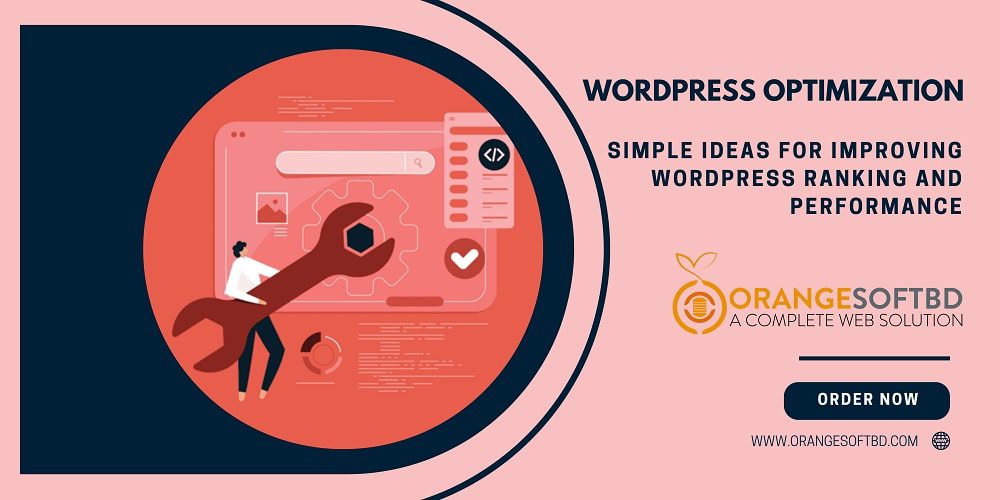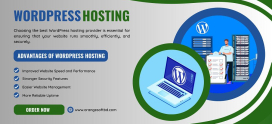
Simple Ideas for Improving WordPress Ranking and Performance
Every WordPress website owner wants their site to load quickly. Why not, then? The user experience is improved and your search engine optimization (SEO) efforts are aided by pages that load quickly. If your website loads slowly, it’s very probable that it won’t get the visitors you want. In reality, as time went on, its ranking would decline. In this blog we describe about how to Speed WordPress Performance.
The good news is that WordPress performance can be sped up in a number of ways. When you are aware of practical speed optimization advice, you can gain from a WordPress website that functions well. You will learn a lot of helpful tips in this extensive essay about how to improve platform speed.
Why Is It Important to Have a Website That Loads Quickly?
Visitors now anticipate websites to load instantly. About 40% of them think it’s best to leave a website if it takes longer than three seconds to fully load. Another noteworthy observation is that sites with loading times between 1 and 2 seconds have conversion rates that are three times or greater than those with loading times between 5 and 10 seconds. The following are some benefits of having a website that loads quickly.
1. Websites that load quickly are prioritized by search engines over those that do not. As a result, anyone looking to improve their site’s rating in search engine results pages should consider doing so.
2. For proprietors of eCommerce stores, site speed is considerably more important. Today’s online shoppers are exceedingly impatient. They anticipate that a page will load quickly. Improve the speed of your website to increase sales at your online store.
3. A website loses 47% of its visitors if it takes longer than two seconds to load. Therefore, you must increase the pace of your website if you want to keep your visitors interested and engaged.
Boosting WordPress Performance: Techniques
There are several ways to build a quick WordPress website. Discover some effective WordPress speed improvement strategies by reading on.
1. Put a WP caching plugin in place
Every time a reader views your website, the pages on your WordPress website are created on the spot. Simply put, they have a lot of movement. For the purpose of creating the pages, WordPress conducts a procedure to ascertain the necessary data, gather it, and present it to a visitor. This procedure is multi-step and complicated. It may slow down your website’s performance, especially if many people are visiting it at once. Therefore, you can speed up your site up to 5 times faster than it already is by installing a caching plugin.
When someone sees your website, the caching plugin creates copies of it instead of having to recreate the entire page from scratch. Instead, it creates a replica of the page once it initially loads. After then, every new user is given the cached version.
2. Pick a reliable web hosting company
The temptation to host their website with a shared hosting company is strong among WP website owners. However, during peak traffic hours, shared hosting environments are unable to deliver fast loading times.
Fortunately, the price of cloud hosting companies has decreased due to improvements in the web hosting sector. Customers may now get dedicated Cloud servers from companies like SiteGround, Amazon Web Services, and others for a reasonable price.
3. Increase WordPress Performance and Site Image Optimization
For user engagement to occur, images are necessary. Unoptimized photos, however, do nothing except hurt your website’s SEO. They impact speed in a number of ways. Utilize photo editing tools to optimize all of your images before publishing them to your website. Large image file sizes can be reduced by applying compression in your software.
PNG and JPEG are two popular picture file types that you can employ. Uncompressed PNG files are best for images with more information and a range of colors. JPEG is a compressed file format that works well for plainer, less-detailed images. JPEGs should make up the majority of the photos on your website.
4. Use a minimal WordPress theme or framework.
It goes without saying that WordPress themes with different components, widgets, sliders, and the like appeal to viewers. But keep in mind that larger page widths and the presence of numerous items will tax your web server.
Utilizing lightweight plugins is an excellent way to improve Speed WordPress Performance. A WordPress default theme is an option. As an alternative, you might select a quick, light, and adaptable WordPress theme like Neve, produced by the people behind the CodeinWP plugin.
5. Minify CSS and JavaScript files
Keeping your website’s code and markup to a minimum is known as “minification.” It’s one of the key strategies for lowering website load times and bandwidth use. An excellent user experience is produced via minification, which increases site speed and accessibility. Remove comments and unneeded spaces before minifying JS and CSS files. Code and file size will be minimized. The minified file version will provide the same functionality while reducing network request bandwidth.
6. Make use of a CDN, or content delivery network
Various geographical regions have different loading times for the website. It’s because of where your web hosting servers are located. Consider the case where your web hosting provider has servers located in England. In this situation, a visitor from England will notice a quicker loading time than a visitor from another nation. You can reduce the loading times for each of your visitors by using a CDN. It is one of the most efficient methods for enhancing WordPress performance.
A global network of servers is referred to as a CDN. The static files that make up your website are kept on every server. These files include static files like pictures, JavaScript, and CSS. They are so distinct from the so-called “dynamic” WordPress pages. A CDN serves static files from the closest server to the user. Additionally, the CDN performs a lot of work, which makes your own web hosting server speedier.
7. Avoid uploading audio or video files straight to your WordPress site.
A lot of website owners make this error. You use your bandwidth directly hosting music and video content. Your site hosting firm will incur overage costs as a result. Additionally, hosting large media files increases the size of the backups. It consequently makes it difficult to restore WordPress from a backup.
Using a video and audio hosting service, such as Vimeo, DailyMotion, or YouTube, is one of the greatest ways to speed up WordPress performance. Their bandwidth is sufficient to host your files.
8. Boost WordPress performance by using GZIP compression
On your local system, file compression results in significant disk space savings. Similar to this, GZIP compression is utilized on the web. It significantly reduces bandwidth usage and the time it takes a user to view your website.
Numerous files are compressed using GZIP, so when a visitor tries to access the website, their browser must first unzip the webpage. This process results in a significant reduction in bandwidth. You can make use of a plugin like the PageSpeed Ninja to enable GZIP compression.
9. Remove unnecessary plugins
Your WordPress website shouldn’t contain any extraneous plugins. They fill the web files with a ton of garbage. Additionally, it increases the size of your backup and strains your server’s resources while creating backup files. Therefore, removing unnecessary plugins is an important WordPress speed optimization tip that you shouldn’t overlook. Find other ways to plan different tasks using third-party services. IFTTT and Zapier are two nice web services you may utilize for this.
10. Think about utilizing quicker plugins.
You can remove unused plugins and replace them with quicker plugins in addition to doing so. The following list includes several popular plugins that are simple to use and improve Speed WordPress Performance.
a. MonsterInsights is a powerful Google Analytics plugin that doesn’t cause the website to load slowly. To speed up the Google Core Web Vitals rating of your website, it includes the ability to run gtag.js locally.
b. WPForms – This contact form plugin for WordPress websites is among the quickest and easiest to use.
c. SeedProd – This WordPress landing page plugin enables you to create landing pages very quickly.
d. All in One SEO – This plugin offers more attention to the functionality of the website and aids the owner in achieving higher SEO rankings.
e. Shared Counts – It loads additional scripts quickly and is the fastest social media plugin.
11. Cut back on outside scripts
The amount of data added by external scripts on your website’s pages significantly slows down the loading process. Use fewer scripts as a result to improve the performance of your website. Use just necessary commenting or tracking systems.
Last Words
Your main goal as website owners should be to provide a fantastic visitor experience. A website’s chances of keeping and attracting visitors are higher when it loads quickly. Use the numerous Speed WordPress Performance optimization techniques described in this article. An increase in the search engine rating of your website will undoubtedly be to your advantage. Feel free to get in touch with experienced WordPress support services if you run into any difficulties implementing any of the suggestions.













